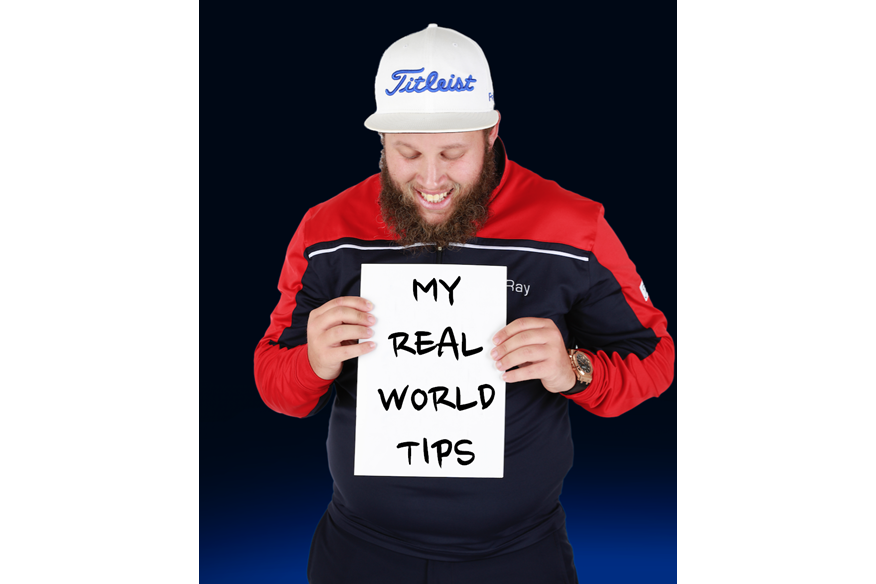Beef’s guide to golf
Last updated:
DRIVING
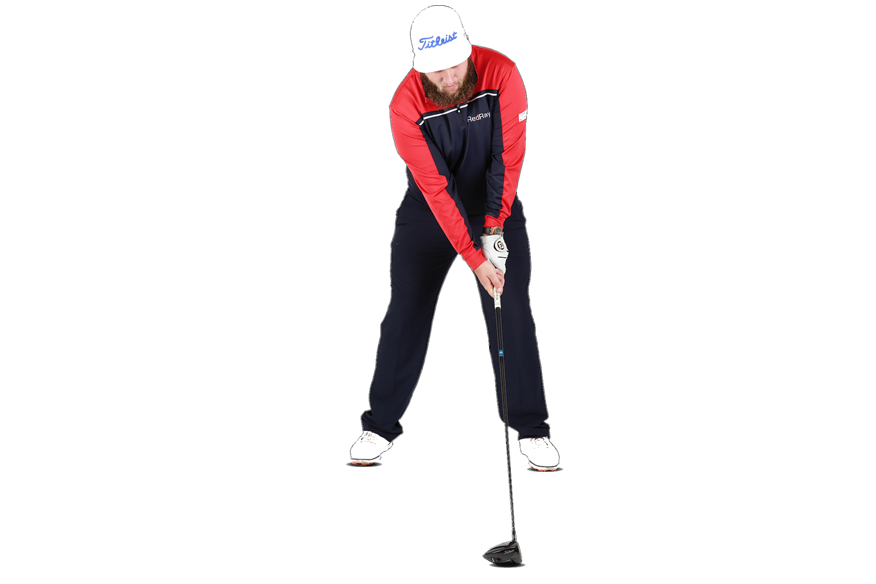
Release The Club For Power
I’m prone to getting my hands ahead of the ball at impact. When this happens I’m forced to strike it with my lead wrist in a bowed position, which really doesn’t work with my strongish grip as it tends to shut the face. One way I avoid this is by keeping my right foot planted for longer during the downswing; but I also work hard on rotating around the spine and body angles I set at address. This gives me my best chance of releasing the club.
IRONS
One of the most amazing things I find is that amateurs always ask me how to draw the ball. A lot of pros fade the ball, so why not use that shot shape to your advantage? People complain that they lose distance from hitting a fade, but the longest hitters in the world – JB Holmes and DJ – hit a fade and they smash it hundreds of miles. It doesn’t matter what shape you hit; more so the consistency. Look at Monty. He’s played 1 2 with a fade throughout his whole career. Of course, sometimes you need to shape the ball, but I think a lot of amateurs don’t realise the face aim at impact dictates the ball’s starting lines and the swing path dictates
the shape.
Hit A Fade
The worst mistake you can make is to start the ball right and let it cut into trouble. I always aim to start it at the left side of the green or fairway and let it cut back in.
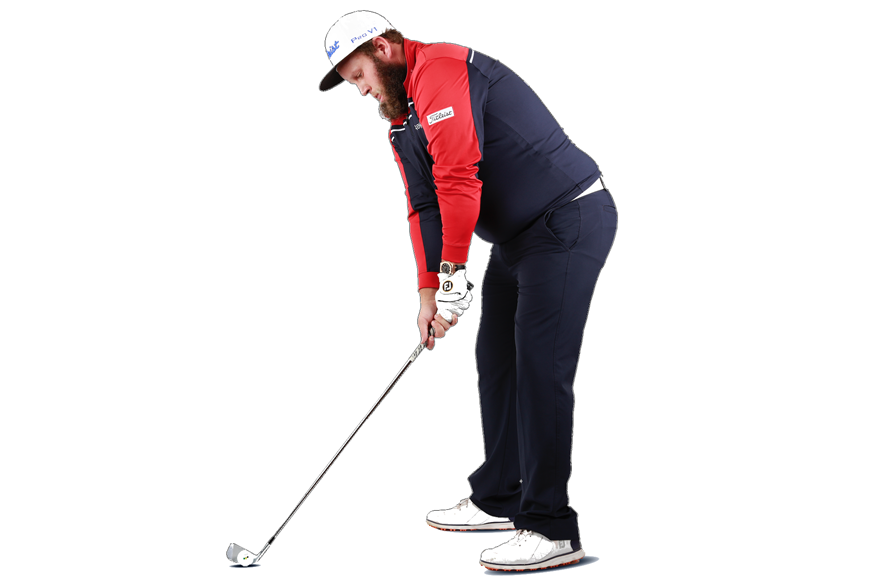
1. Good aim I aim the clubface where I want the ball to start and stand a touch open to promote an out-to-in path and a cutting shape. People vary how open they stand. It’s entirely a comfort thing so experiment on the range.
2. Don’t forget to move the ball forward at address. This helps you catch the ball later in the arc, which helps you nd the out-to-in impact path needed to curve the ball left to right (right-handers). Also, I’ll just swing a little steeper and hold off the nish through impact
Hit A Draw
At last year’s Open I needed a shot that held the ball into a left-to-right wind. My coach and I worked on aiming slightly right of target as for a normal draw but positioning the blade square to the target, or in very strong winds slightly closed.
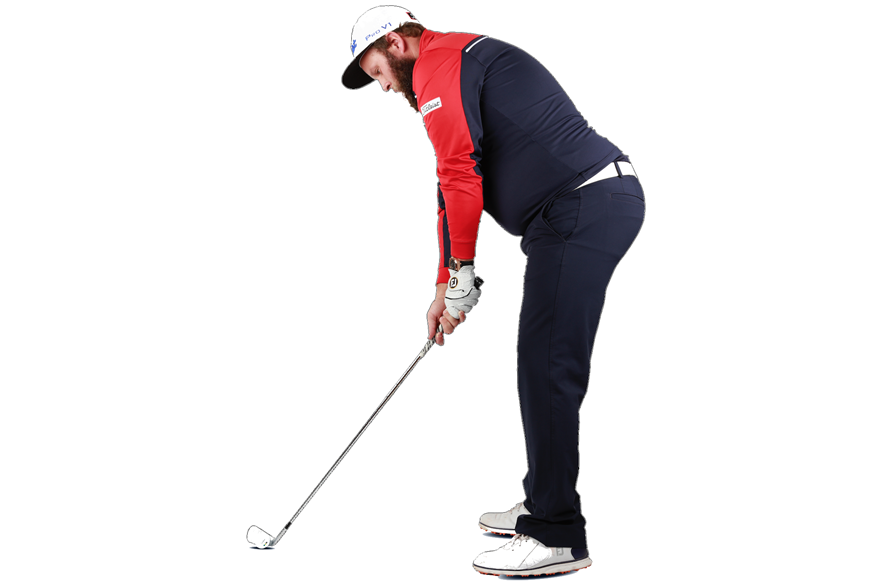
This starts the ball a little straighter and imparts extra drawspin, helping the ball hold its line. But with either draw shot, I play the ball further back in my stance. This helps to produce that in-to-out path.
The trick is… to let the ball position and face aim do the work. Don’t try to manipulate the face by icking at it.
CHIPPING
The key with chipping is to pick the right shot at the right time. If you’ve got 40ft of green to work with, don’t get the wedge out. If you don’t like the lie, don’t be afraid to use a 9-iron or even a putter instead of a 60° wedge. One of my favourite shots to play in links golf is chipping off a tight lie. I don’t know where I learned the technique from, but it’s almost like a half op shot with a 58° wedge and works best from 25 to 50 yards. At address, I try to feel like I’m on top of the ball. I stand quite open and set the face open so it’s aiming right of the target. I then try to nip the ball off the turf by cutting across it hard – it needs to be hard – to generate plenty of spin.
Accelerate through impact
It’s quite a handsy shot and I like to get quite steep by exaggerating the hinge of the wrists. The ball should come out quite at, but after a couple of hops it should grip and spin. Far too many players decelerate when they chip, but this is one shot where you really need to be aggressive and commit.
BUNKERS
One thing I notice when I’m playing in pro-ams is how terri ed amateurs are of bunkers. They almost seem scared of opening the clubface and instead approach every shot with it square. They’re then wary of hitting the shot too hard and end up decelerating and presenting the leading edge. If you’re in a greenside bunker, don’t be afraid to get the clubface open and hit half-an-inch or an inch behind the ball. If you open your stance and clubface and use more loft, you can be more aggressive and the rounded sole (bounce) will resist digging into the sand. The ball will go higher, but won’t go as far so you’ll have more room for error.
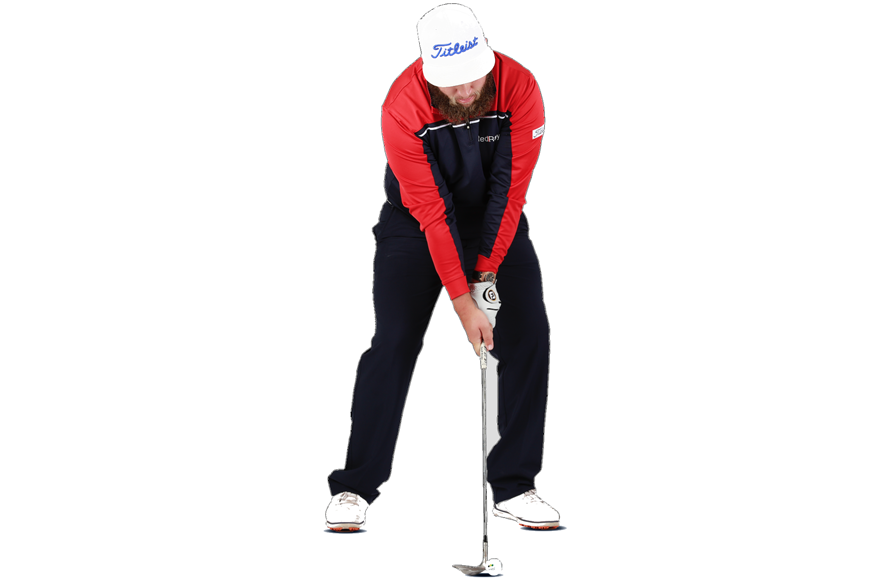
Draw The Line
Getting your distance control right is as simple as going in the bunker, drawing a line just behind the ball and concentrating on hitting the line… contacting the sand before the ball. It doesn’t matter if you hit half-an-inch, an inch or an inch-and-a-half behind the ball. As long as you are consistent, that’s all that matters.
PUTTING
I’m always working on set-up and one of my real problems is failing to accelerate on putts and then flicking at the ball. I’m constantly working on keeping my left wrist strong through impact. I was watching Matt Kuchar at the Open and I loved the way he putted. I remember thinking to myself his left wrist can’t break down because the top of the grip rests against his forearm. I asked Scotty Cameron to make me one and I used it for the rest time at the DP World Tour Championship. It felt a lot better and I was really happy with the way I was putting. The face became more stable and I had 26 putts on the Sunday. I’ll be sticking with it this year.
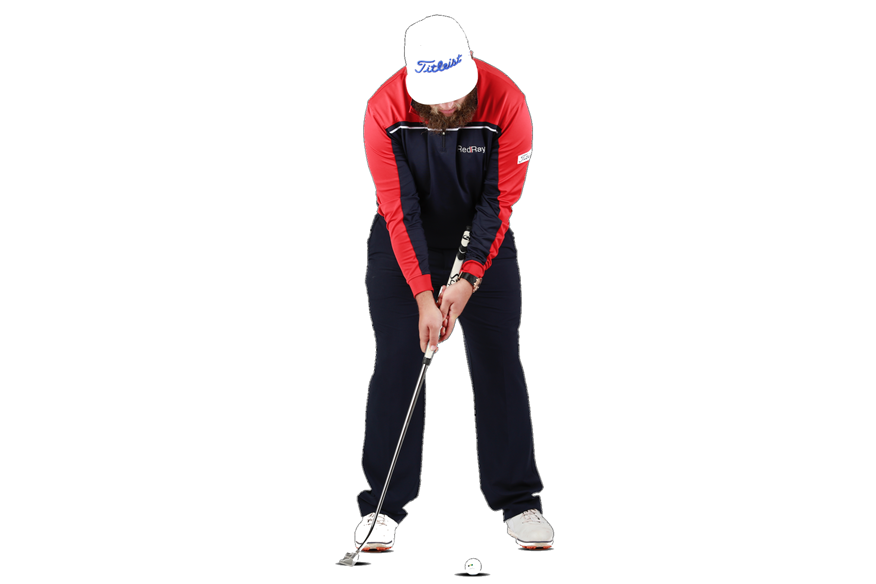
Solid Unit
Putting with your lead arm against the grip is a great drill to help you keep the face square for longer – and to stop any kind of flinching or separation at impact. If you don’t have an arm lock -style putter, just grip down your current putter – even down on to the shaft – and hit putts. Feel how steady the impact feels with your lead forearm and handle united. When you switch back to your shorter putter, you should be able to replicate the feeling of keeping the wrists solid. If a gap appears between the grip and the forearm (above), you can tell you’re flicking at it.
